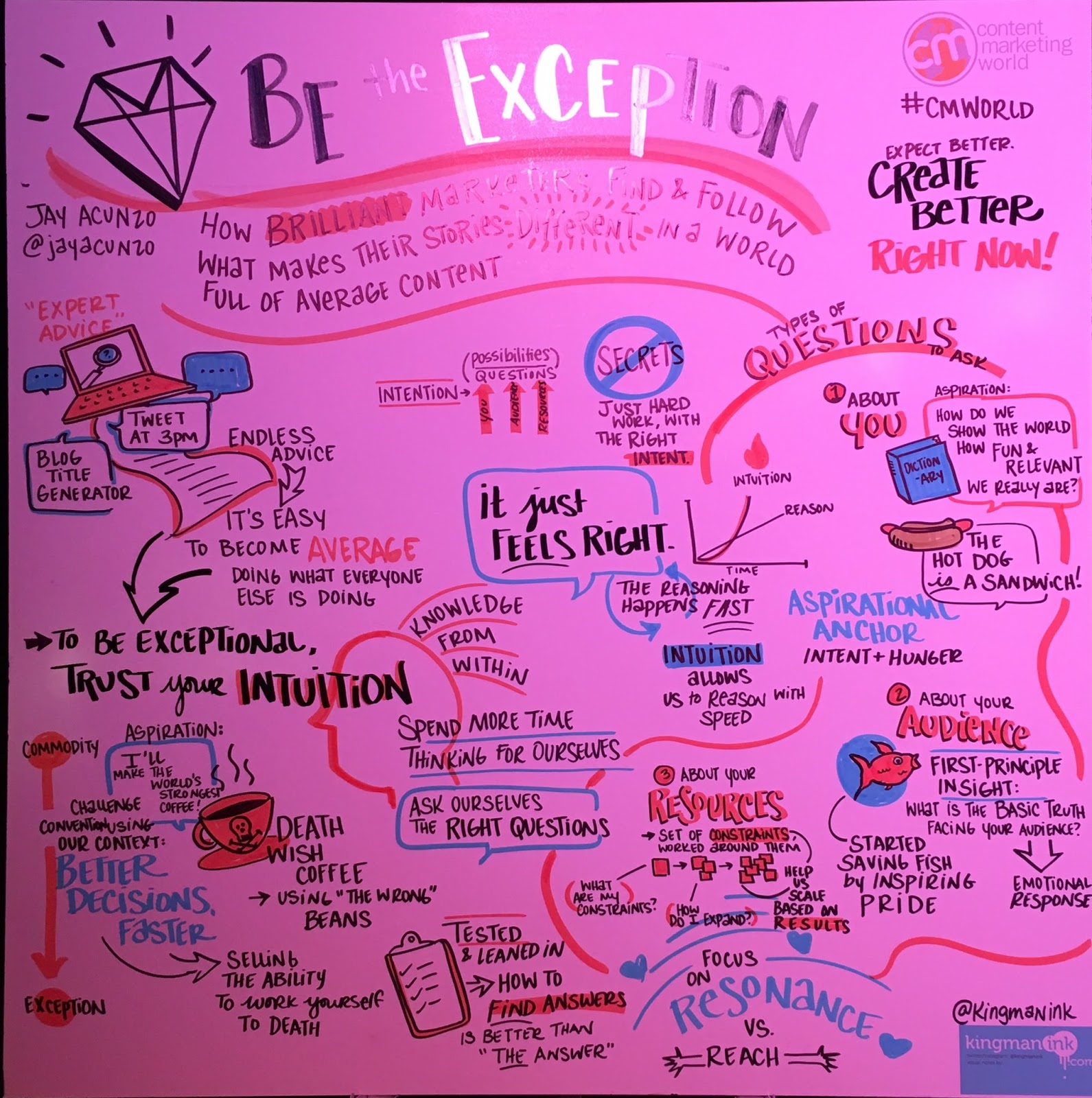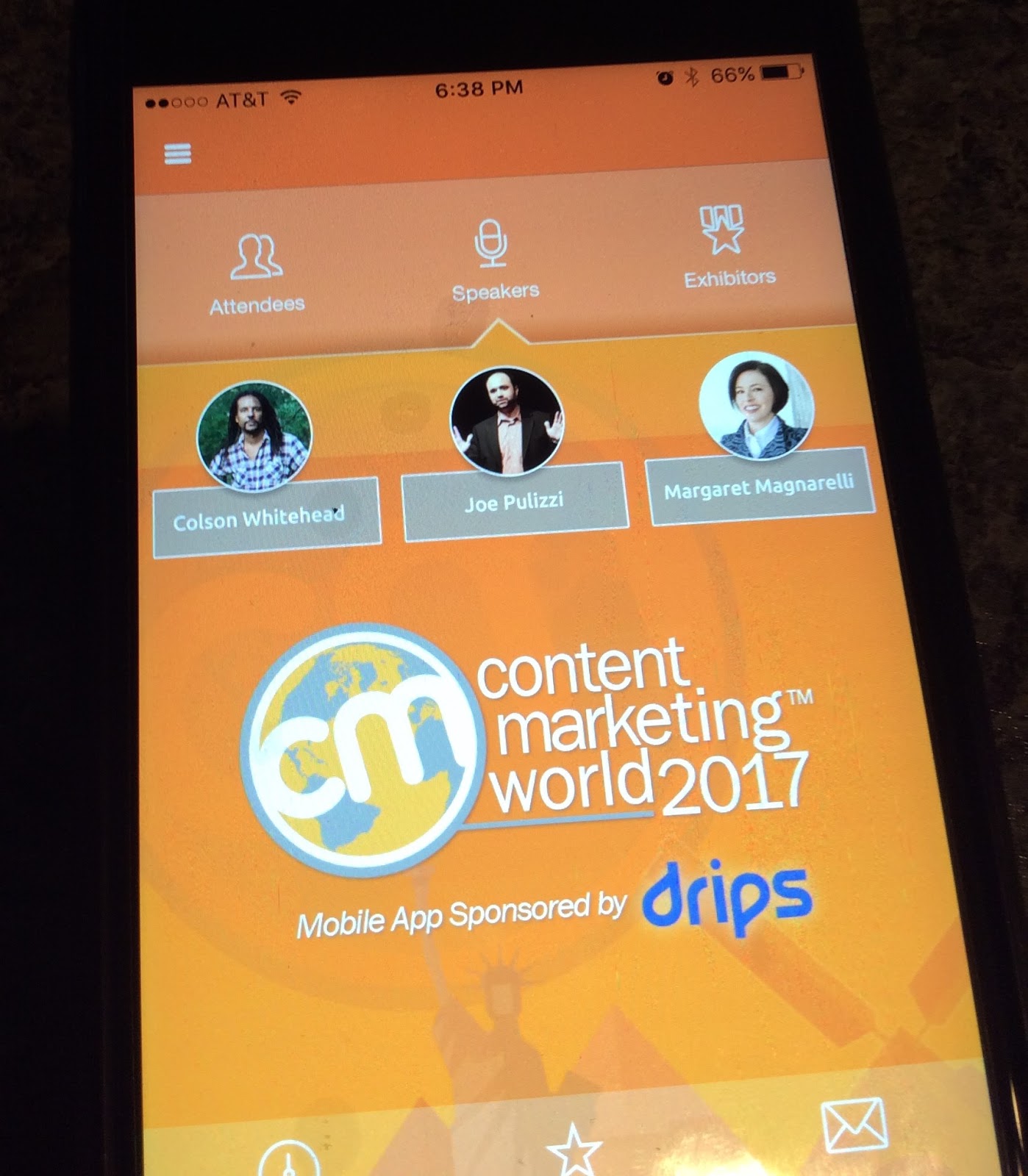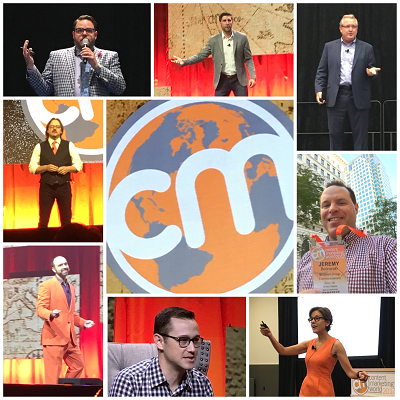A few Fridays ago, I woke up excited. Why? Because the new Foo Fighters CD was coming out that day. I couldn’t wait to buy it. It’s the same excitement I’ll feel when I get to see them in concert (and they better not skip Cleveland this tour!). Not to mention the excitement I had for Content Marketing World 2017, but more on that in a minute.
Being a huge rock music and Foo Fighters fan, these are the types of things that I anticipate. You may have a different band you follow. Or you’ll be first in line for the new iPhone or next Star Wars movie. Whatever it is, we all have certain brands that we’re fanatic about.
How do rock bands get fans that are this passionate about the content or products they release? They create them. They build their audience by making content (music). They’ve been doing it forever. They’re able to monetize their audiences in different ways…CDs, downloads, concerts, fan clubs, VIP packages, etc. Now, marketing is finally catching on or catching up.
The power of building and monetizing your audience has always been a theme of content marketing. But, it had an even bigger focus at Content Marketing World 2017 in Cleveland. It’s also the basis for the new book Killing Marketing by Joe Pulizzi and Robert Rose.
Are We Missing Opportunities?

Joe Pulizzi kicked off Content Marketing World 2017 with the overarching question that is the concept of the book:
“What if everything we know to be true about marketing is actually what’s holding back our business?”
Is there more? What if there are opportunities with our marketing that we can’t see because of what we think we know? Pulizzi gave the example of George Lucas giving up an extra $1 million to direct Star Wars to instead secure merchandising rights. 20th Century Fox couldn’t see beyond ticket sales as a way for movies to make money. As of 2015, Star Wars merchandise has brought in $12 billion vs. $5 billion in ticket sales.
The key is for companies to develop their audiences by creating remarkable content. Then, find multiple ways to monetize your audience. Robert Rose’s presentation included how to begin to calculate a value of your audience. The main point of both presentations and the book is to transform the marketing department into a profit center for companies. To get there, we need to kill the marketing we know to discover a new model.
Content marketing is what will lead brands to develop their audiences. In fact, 90% of effective content marketers focus on building their audience.
But, more content is being produced than ever before. With so much content available, how do you stand out to be able to build your audience? Many of the sessions helped to answer that question. The following summarizes some of the main themes to help your content stand out.
It’s Never Been Easier to Be Average

Jay Acunzo talked about ways to make your content stand out. Many marketers are looking for answers from influencers. Or, they apply best practices from successful companies. But, best practices are what worked yesterday. When you tell marketers that 3pm on Tuesday is the best time to publish social media posts, that time is no longer the best time to publish.
Instead of looking to others for answers, we need to be willing to create our own answers. Create our own best practices. This is how you stand out from being average or publishing the same content as everyone else.
Break Marketing Conventions
Doug Kessler explained that there are strong, invisible conventions in marketing. We may not realize we’re following them, but consumers recognize them. Once they recognize them, their internal barriers go up. It’s our job to recognize the barriers and break them when we can. Content marketing offers opportunities to go against many of the conventions. Although, people are starting to recognize the conventions in content marketing too.
What types of conventions should we break? Here are a few examples:
- Instead of hiding your weaknesses, openly share where your product falls short. This practice builds trust with your customers. It surprises and delights while signaling your confidence where you excel.
- While data is always important in marketing, you also need to know when to follow your gut. Kessler gave the example of SEOMoz’s Whiteboard Friday. The data said to kill it for three years. But, they knew they were on to something that would resonate with their viewers.
- B2B marketing copy has always been stiff and formal. But, marketers are realizing that even in B2B, they’re still talking to humans. So, the new voice is much more conversational and personal.
Be Writers First. Marketers Second.
Ann Handley discussed how we need to create and write content based on customer needs. It should never start out as something that we create for the sake of creating. What are customers asking and how can we use content to answer it?
Instead of rushing to get a ton of content out there, we need to slow down. Less content that offers more value is better than more average content. Quality is better than quantity.
Above all, make sure that you’re proud of the work you publish. If you wouldn’t want to read it, would anyone else?

Most Content Fails
Only a third of marketers say their content is effective. That means that the rest are failing…and acknowledge it. According to Jay Baer, content fails when it’s not relevant enough to trade time for the information. Furthermore, those that say they’re too busy to read your content are saying that it’s not relevant enough.
How do you fix your content to make sure it’s relevant to your audience? There are four areas to put your focus:
- Content Topics: Understand who your personas are, where they are in the sales funnel, and what questions you need to answer to get them to the next stage. You can do this by talking to your customers or the departments in your company that talks to the customers. You can also mine your analytics, social media comments and search data.
- Content Format: Think like a TV network. Create a content strategy by building a calendar of consistent, thematic “shows.” This helps to condition your audience to know when to expect new content.
- Content Messenger: We tend to trust people more than brands. Mark Schaefer touched on this notion in his session as well. People are moving to care about products not because of a brand, but because of the “hands that made them.” If your brand created your content, be sure to put a person in front of it.
- Content Amplification: We all would love to give our content an extra boost. But, we need to recognize what content we should be amplifying. Instead of promoting mediocre content, we should amplify our good content. Baer explained that we should try to make our sixes into nines, not twos into sixes. He summed it up best by saying “No amount of money can add relevancy to mediocre content.”
In the music industry, new music comes out all the time. Bands have to attract attention, build their audience and get them to spend money if they’re going to make. We’re in the same battle in content marketing. Following the advice above will help your content stand out. When you build your audience through remarkable content, they’ll look forward to getting it. They might even be as excited as I was to get the new Foo Fighters CD!
What were your takeaways from Content Marketing World 2017? Thanks for reading. If you like this post, please share it!
